|
This story was originally published on Santé Magazine. “Every generation brings their touch, with their own history and own experience.” Thirty-six-year-old Delphine Nathalie Gardère is the fifth generation and newest CEO of Rhum Barbancourt, one of Haiti’s largest rum exporters. Delphine is the second woman in her family to attain the head position in the company’s history. Rhum Barbancourt is the oldest rum company in Haiti, founded by Dupré Barbancourt in 1862. In a virtual conversation with Delphine, she said, “My grandfather, a jurist/entrepreneur, brought the business from the back of the family house to the equivalent of the Great Plains of Haiti, which was a revolution. My father, an engineer, increased the production capacities. I come from a different background, with a business-oriented education, and work experience outside of the family business (investment banking and luxury goods marketing). Every generation brings their touch, with their own history and own experience.” Rum is made world-wide, but the Caribbean is probably the best-known area for production. It is believed that the first distillation of rum dates back to the 17th century on sugar cane plantations in the Caribbean, most specifically Barbados. The plantation workers discovered that molasses fermented into alcohol. Haiti is located in the Caribbean and is the western part of Hispaniola, bordering the Dominican Republic. Rum is a distilled liquor made from sugar cane by-products such as sugar cane juice, sugar cane syrup, or molasses. Typically after the sugar cane is cut, it is taken to the mill and fed into a crusher. This process extracts the sugar cane juice from the fibrous pulp. At this point, the sugar cane juice can be fermented and distilled or cooked down into a syrup for fermentation and distillation. The last option is to process the sugar cane juice into molasses. Fermentation, distillation, and barrel-aging vary from one distillery to another. However, most rums are aged and blended with other batches from the distillery or blended with rums of different ages. Rum is available in many styles and flavors, from sipping rums to cocktail mixers to sweet, spicy, and herbal. In 1862, Dupré Barbancourt used sugar cane juice and applied the traditional French distillation method of double distillation, usually reserved for the very finest cognacs. He aged the rum in oak barrels from Limousin, France, as practiced in cognac production in his native Charente. Dupré passed away in 1907, leaving no heirs. His wife, Nathalie Gardère, and her nephew Paul managed the company until her passing, and then Paul took over. During this time, the distillery was located in Port au Prince. Only a limited quantity of rum was produced and sold, with the older aged rum reserved solely for family and friends. In 1946, Paul’s son, Jean Gardère, took over the business, initiating its modernization. And by 1949, Rhum Barbancourt relocated the distillery to the “heart of the sugar cane fields” of Domaine Barbancourt. By 1952, the company had transformed from a small cottage industry to an international exporter. Jean passed away in 1990, and fourth-generation Thierry Gardère took the helm. He upheld the commitment to quality, fine natural ingredients, and the unique cognac-based production process. Thierry passed away in 2017, passing the baton to his daughter, Delphine. Delphine talked about growing up with the backdrop of the distillery and her “ah-hah” moment of wanting to be a part of it. Delphine: “Growing up in Haiti was very particular. I was born in the 1980s, and by the 1990s, Haiti was under embargo. So my mother and I moved to Jamaica, where I learned English over the summer so I could attend school. My father at the time remained in Haiti. I remember as a child it being a very intense time. My father was the only one of his brothers and sisters to choose to move back to Haiti and work for Barbancourt. He was the one “holding the fort” in times of uncertainty, and he always had a strong sense of duty towards the employees, which they still admire. Several periods shaped our family history (end of the dictatorship, the departure of Aristide in 2004, Haiti earthquake). I have a lot of admiration for the courage, determination, and resilience he had, not only as my father but also as a CEO. This is what always keeps me going in difficult times. The family business was never something that was forced upon me and I slowly became involved in it. I first realized how “cool” it was when I went to high school in Paris. We had a presentation on career day from L’Oréal, where I discovered business strategy, marketing, packaging, etc. On this day, it really clicked for me that I wanted to go to business school. This was when things started.” I asked Delphine to tell me about Barbancourt’s production process. Delphine: “Today, Barbancourt employs 500 people and works with 3000 farmers in a co-op manner. Only 20% of our sugar cane comes from our lands; 80% is sourced from local farmers. It is at the core of our value chain. Our brand’s DNA is rooted in aged rums, and our Haitian Heritage makes our products unique in terms of positioning. Our products are made from sugar cane juice, but we are not an AOC Agricole Rum, as we are not French. (Rhum Agricole is the French term for sugar cane juice rum) We do not use molasses, so we are not English or Hispanic in terms of Rum. This trickles through our production process, which is unique and gives a rum that can be viewed as light, smooth, and with no added sugar or caramel.” I received two samples of Rhum Barbancourt for review, and I tasted both rums neat. Rhum Barbancourt Reserve Speciale, 5 Star Aged 8 Years
This is a noteworthy “sipping” rum that would most certainly add character to a light rum cocktail. Double distilled and aged for eight years in French oak. It is slightly dry and smooth. The nose offers caramel, vanilla, candied orange, spice, and a touch of ethanol. A surprising palate is reminiscent of brandy with notes of smokey toast, toffee, vanilla, and dried fruit that linger on a long finish. Alcohol: 43% 86 Proof SRP: $25-$30 Rhum Barbancourt Estate Reserve, Aged 15 Years This is a rich and elegant sipping rum. Butterscotch, toast, baking spice, and orange peel aromas set the stage for this complex and creamy rum. The palate offers caramelized sugar, charred oak, candied fruit, orange peel, and a long finish of spice notes, and a touch of dark chocolate. It had my palate begging for another sip Alcohol: 43% 86 Proof SRP: $50-$55 Before we said our virtual good-byes, I had a few more questions for Delphine. Delphine, please tell me about your interest in Women’s Empowerment. Delphine: “I live in Haiti and have two young daughters. I would feel like a fraud saying that the road leading up to this was easy. Inside and outside of my role at Barbancourt, I would like to use my voice to help other women. I recently went to dinner with men where I spent three hours being mansplained and manterrupted. It shows that there’s still a lot to be done in the area of Women’s Empowerment. This is my most recent example of things that need to change. On a larger scale, campaigns like “Me Too” that happened in the US are things that don’t exist here. Victims of abuse are often left confused, misunderstood, with no voice, and no one to talk to, in a country that doesn’t have the infrastructure for this.” As CEO and fifth generation of the company, what is your vision for the future? Delphine: I’m very humbled by the history and legacy of our family business. My role as the CEO of a family business is to grow and maintain the company for future generations. On a more personal level, my goal is to expand the fame of Rhum Barbancourt, increasing brand recognition through International development and the launch of new products. My professional background is deeply rooted in luxury consumer goods and brand strategic management, so I am looking forward to seeing Barbancourt grow and be the International Ambassador Haiti deserves.” And, I am looking forward to following Delphine’s journey and enjoying more products from Rhum Barbancourt. Until next time... Cheers! Penny To leave a comment or if you have an inquiry, please contact me at [email protected] Summertime usually brings with it lots of get-togethers with family and friends and fun activities such as outdoor concerts, swimming parties, barbecues, sporting events and beach time. However, this summer we have an intrusive and uninvited guest, COVID19. And, unfortunately, this pandemic brought a whole new meaning to the word “socializing”. Even though it’s going to be a bit more challenging, there are still many activities that can be enjoyed solo or in small groups. Happily, food and drinks will always continue to be part of most festivities. So, with that in mind let’s shake things up a bit and introduce a few spirits and cocktails into your summer fun. Whether you’re watching a sunset from the comfort of home or enjoying a backyard picnic, these spirits are palate pleasers! Tequila Bribón Blanco This tequila is produced from one of the top three tequila families in Mexico. Fully matured seven to ten-year-old agaves are hand-harvested and cooked for 18 hours at 100°C. The agaves are then shredded and the juice is fermented in tanks and then double distilled. This 100% agave tequila is un-aged, clear in color and has subtle aromas of floral, pepper, fruit notes and savory. These aromas continue onto the palate with coconut, pepper and a trace of floral on the finish. Enjoy on the rocks or in your favorite cocktail. Margarita anyone? Alcohol: 40% 80 proof SRP: $24.99 Tequila Cherry Sunrise. Cocktail recipe courtesy of Bribón. Fill glass with ice and pour the following into it. 1.5 oz Tequila 1.5 oz orange juice 1.5 oz Cherry Heering (pour this to the side, not directly on top) Diplomático Reserva Exclusiva Rum Diplomático is an independent family-owned company located at the foot of the Andes in Venezuela. This rum is a blend of exclusive rum reserves that are aged up to 12 years. It is carefully crafted with attention to detail from the selection of the purest sugar cane honey to fermentation, distillation, then barrel aging, and finally blending the matured spirits. Seductive aromas of caramel, vanilla and candied orange peel float onto the palate with hints of cinnamon, ginger and toffee. This is a smooth and elegant rum that I feel is best enjoyed neat or on the rocks. I have included a cocktail recipe recommended by Diplomático for your tasting pleasure. Alcohol: 40% SRP: $42.99 Signed & Sealed created by Jon Lister, Brand Ambassador UK Add all the ingredients to a stirring glass, fill with ice, stir and strain Ingredients 40 ml Reserva Exclusiva 30 ml Strawberry infused Cocchi Rosa 3 dashes of Lavender bitters Serve straight up Grace O’Malley Blended Irish Whiskey This is the first Irish Whiskey to be named after a woman. Grainne Ni Mháille/Grace O’Malley was a 16th century Irish Pirate Queen. She was born into Irish nobility and was a natural leader, gifted negotiator and a fearless mariner. Grace was far from ordinary, just like this whiskey, which has 46% malt content, one of the highest in the blended whiskey category. It is a special blend that combines whiskeys with age statements from three to ten years old. Each batch of whiskey is aged in a range of barrel types including French oak, ex-bourbon, and ex-rum casks. Aromas of caramel, honey, nuts and orange zest segue onto the palate with hints of malt, vanilla and toasted oak. This is a smooth whiskey that keeps on talking in a long finish. Enjoy neat, over ice or in a cocktail. Below is a cocktail recipe taken from the Grace O’Malley website. Alcohol: 40% SRP: $34.99 MANHATTAN SMOKE SHOW WITH GRACE O’MALLEY BLENDED WHISKEY The Manhattan Smoke Show is a variation of the classic Manhattan. This is a boozy cocktail by nature and this version is no different in that respect. The Manhattan Smoke Show uses different spirits from around the world. The base ingredient is Grace O’Malley Blended Irish Whiskey. Cherry Liqueur complements the currant and vanilla notes in the whiskey. Vermouth is included and is typical of a Manhattan cocktail. The smokiness in this version comes from the Mezcal, while the Ancho Chile Liqueur also adds a subtle smokiness, spiciness and sweetness to this drink. MANHATTAN SMOKE SHOW 30ml Grace O'Malley Blended Irish Whiskey (1oz) 20ml Mezcal (.75oz) 15ml Ancho Chile Liqueur by Ancho Reyes (0.5oz) 20ml Heering Cherry Liqueur (0.75oz) 15ml Sweet or Amber Vermouth (0.5oz) Stir all the ingredients together with ice. Strain into a small coupe-style glass and serve. Disaronno Velvet Disaronno is a liqueur made in Italy. It has a very distinct aroma and delicious flavors of almonds called Armelline (the seeds of apricot stone), sweet fruit, Madagascar vanilla and pure caramelized sugar. Disaronno Velvet has all the familiar flavors of the classic version, but it is also creamy and smooth with a touch of chocolate and vanilla. This is a refreshing and perfect “cooling off” drink to enjoy throughout the summer. And thanks to its low alcohol content, this cream liqueur is a great alternative to other spirits. The best way to enjoy Disaronno Velvet is to serve it over ice. A dash of Disaronno Velvet in iced coffee is delicious as well! Enjoy! Alcohol: 17% SRP: $29.99 Please share your original cocktail recipes with me and I will be happy to publish them! In the meantime, put a smile on your face, rise to the challenge and let’s embrace the summer of 2020.
Until next time, Cheers! Penina To leave a comment or if you have an inquiry, please contact me at [email protected] A few days ago I was invited to attend a Holiday Booze Bazaar featuring a collection of classic and vintage artisanal spirits presented by Domaine Select Wine & Spirits. As bartenders poured exotic cocktails, I walked around the room tasting some noteworthy “booze”. One of the eye openers for me was Mizu Shochu, handcrafted and single distilled by the Munemasa Shuzo Co. of Arita, Japan. I tasted both the traditional Japanese shochu made from two-rowed barley and black koji rice and the shochu made from rice and lemongrass. They are both single distilled and 70 proof. Although one might think they are tasting a form of sake when drinking shochu, there are significant differences between the two. Shochu is distilled whereas sake is fermented. Sake is made exclusively from rice and shochu can be made with barley, sweet potato, rice and many other ingredients. It is also interesting to note that shochu is the national spirit of Japan and outsells sake! The traditional Mizu Shochu is made with 67% barley and 33% black koji rice. Aromas of sweet cut grass, floral and melon segue onto the palate with a smooth texture of grains, vanilla and a hint of pepper. Lemongrass Shochu is made with 95% rice and white koji and 5% fresh organic lemongrass. The nose offers hints of lemon and floral. The taste is silky with citrus, herbs and a hint of vanilla. SRP $35-$40 Shochu is a great alternative to vodka and just as versatile. Drink it with one ice cube as recommended or be creative and mix it in a cocktail. I’m definitely adding Mizu Shochu to my bar inventory! Another great discovery was Don Papa Rum. Oh my! This is a premium-aged rum from Negros, Philippines. The best quality sugarcane is used, called noble cane. The juices are extracted in the old Negros sugar mills and then concentrated into molasses. The molasses is distilled and then the distillate is aged for a minimum of seven years. After that, the master blender creates his magic. This rum is very smooth and rich, with a soft amber color. Heady aromas of oranges, apricots and vanilla give way to coconut, marmalade, vanilla and caramel on the palate. This rum should be enjoyed “neat” and not wasted in a mixed drink. 80 proof Alcohol: 40% SRP: $38 I have included a close-up photo of the label. It is quite whimsical. Can you find all the hidden animals? It was a fun and educational event for me. I always love tasting new wines and spirits! Here is a slideshow of a few more noteworthy discoveries. Until next time!
Cheers! Penina To leave a comment or if you have an inquiry, please contact me at [email protected] My son recently visited Bermuda for a long overdue vacation. While there, he discovered The Bermuda Rum Swizzle, considered one of the national drinks of Bermuda. So, of course he brought back a bottle of Goslings “The Original” Rum Swizzle ready mixed version for me to try. 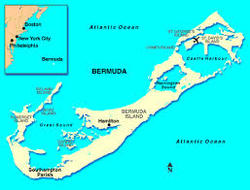 Bermuda is a British overseas territory situated in the Atlantic Ocean, about 665 miles from North Carolina. Famous for its pink sand, tropical climate and crystal blue ocean, Bermuda is also known for its rum. Back in 1806, James Gosling, son of wines and spirits merchant William Gosling, set sail from England and landed in St. George Bermuda. In 1824 with his brother Ambrose, they rented a shop in Hamilton where they maintained a store for 127 years. In 1860 the first oak barrels of rum distillate arrived in Bermuda, where after much experimentation in blending took place, a unique black rum was formulated and offered for sale. This black rum was sold from the barrel and ultimately called Black Seal after WW One. Today the company is run by the seventh generation of Goslings. The Original Swizzle Inn Brand Rum Swizzle is a rum-based cocktail made with Gosling’s Black Seal Rum, Gosling’s Gold Bermuda Rum, pineapple and orange juice, sugar syrup, Triple Sec and lemons. Jay Correira, proprietor of the Swizzle Inn, claims the Swizzle drink was invented at the Swizzle Inn pub in 1932. Goslings offers a ready mixed version, but I just found out that it is no longer available in the US. Although I’m not a big fan of fruity alcohol drinks, this caught my attention. The blend definitely tastes of more rum than fruit! The nose is very aromatic and the palate is a rich blend of spice, bitters, subtle fruit flavors and a hint of vanilla. Alcohol: 19% If you don’t want to make the trip to Bermuda, here is the recipe for the Bermuda Rum Swizzle:
Fill a pitcher with cracked ice and add the following ingredients: 4oz Goslings Black Seal Rum 4oz Goslings Gold Bermuda Rum 2oz Triple Sec Juice of 2 lemons 5oz Pineapple Juice 5oz Orange Juice 2oz Bermuda Falernum or simple sugar syrup 4 dashes of Angostura Bitters Shake vigorously until frothing head appears. Strain into glasses. Enjoy! I’m off to find Goslings Black Seal and Gold Bermuda Rum, which I’m happy to say, is sold in the US! Cheers! Penina In case you didn’t read my last post, it was about El Ron Prohibido Habanero rum from Mexico. In the post I explained the aging process using the traditional 12-year solera system. You might want to scroll down to the previous post and read about it prior to reading my tasting notes. We finally opened the bottle last night, which is reminiscent of a pirate’s jug of rum, except this bottle is all glass. The bottle has a very “old world” look to it that makes it very inviting. The best way to drink this rum is “straight”, otherwise the subtle flavors will be lost. The color is dark amber with a sweet aroma that reminded me of sherry and port. Dry fruits, prunes and vanilla were present on the nose followed by hints of raisin. The palate offered honey, plum, oak and raisins. The rum had a bittersweet finish of vanilla and espresso beans that lingered on the palate. Overall, I found the process of making the rum and its packaging more intriguing than the rum itself. Alcohol: 40%  I have a busy week ahead, with my main goal of staying cool and hydrated! Have a great Monday! Cheers! Penina  With the temps in the 90s this weekend, it has been less than conducive to imbibe anything but water to stay hydrated. Even the chilled Rosés, Chardonnays and Prosecco in my refrigerator are being ignored. My reviews will have to wait another day or so. 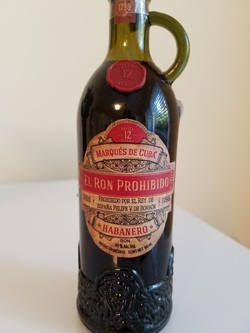 A friend, who recently visited Mexico, brought back a gift for me to try. It is a bottle of El Ron Prohibido Habanero, (the forbidden rum). It is a blend of aged rums using the traditional 12-year solera system. Fermentation takes place in used raisin wine barrels prior to the “mosto” being distilled in column stills. The solera system is an aging process using new batches of rum mixed with older ones in a tiered or pyramid structure. The bottom tier is the solera, the eldest rum, which doesn’t leave the system. The rows above are the younger rums (criadera). It is an interesting process in which about only half of the rum is taken out of the bottom row at the end of a cycle and then the next row up is transferred down to the solera, creating a blend of characteristics that rapidly transfer to the younger rum. This process continues all the way to the top of the pyramid, where new product is added. 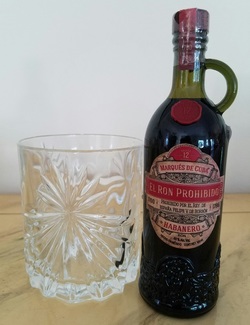 I’m looking forward to tasting this rum very soon. And hopefully the next photo won’t be of an empty glass! Happy Saturday!
Cheers! Penina |
Categories
All
|

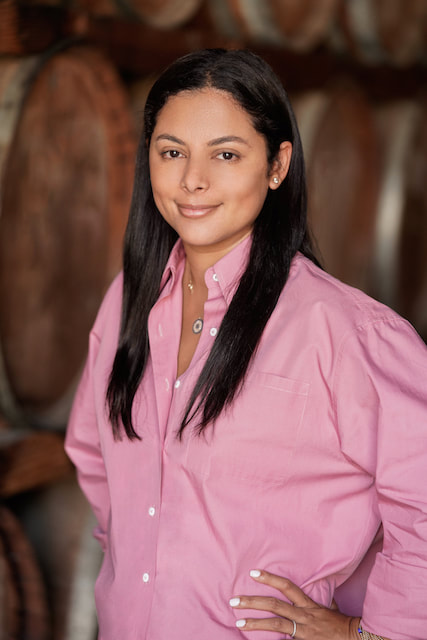
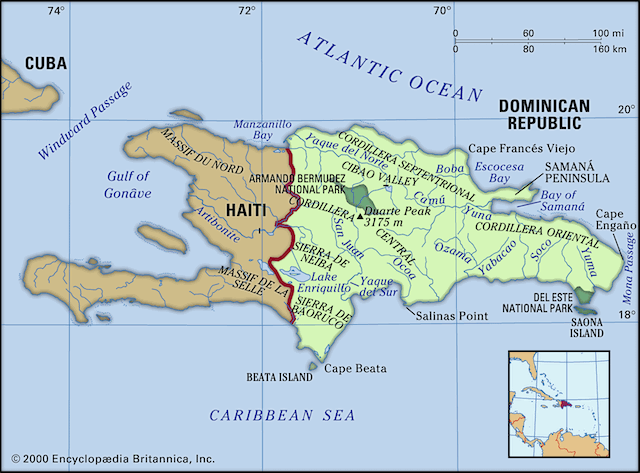
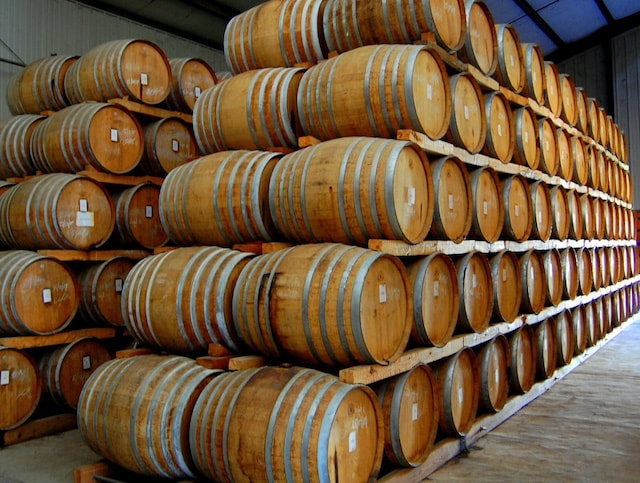
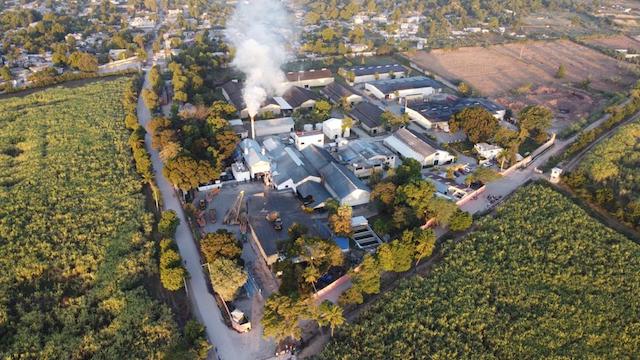
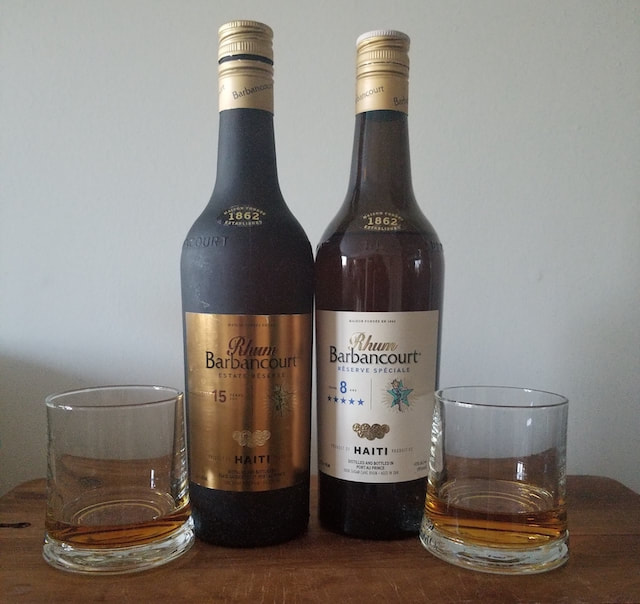

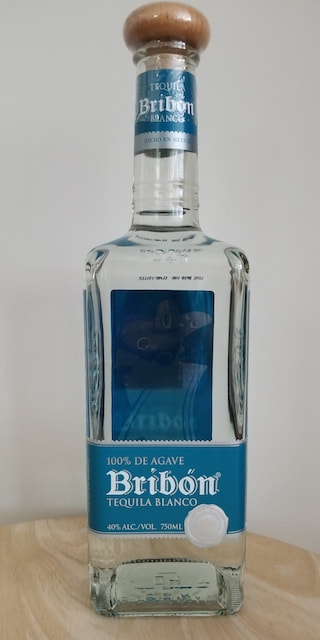
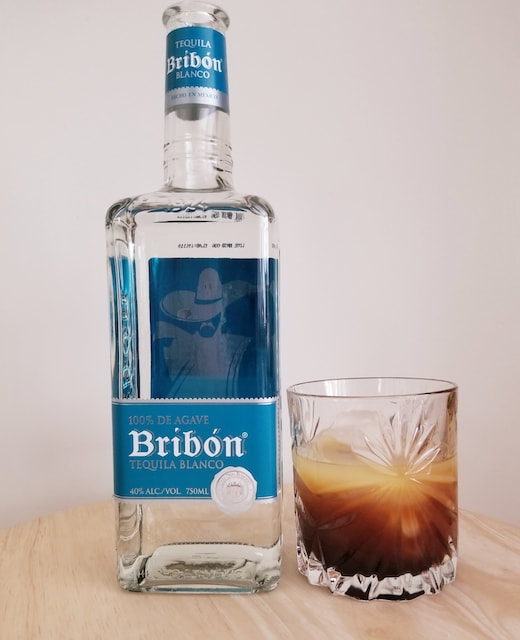
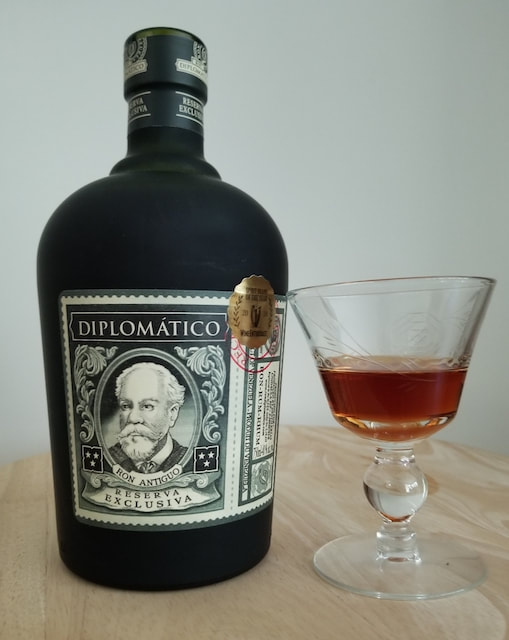
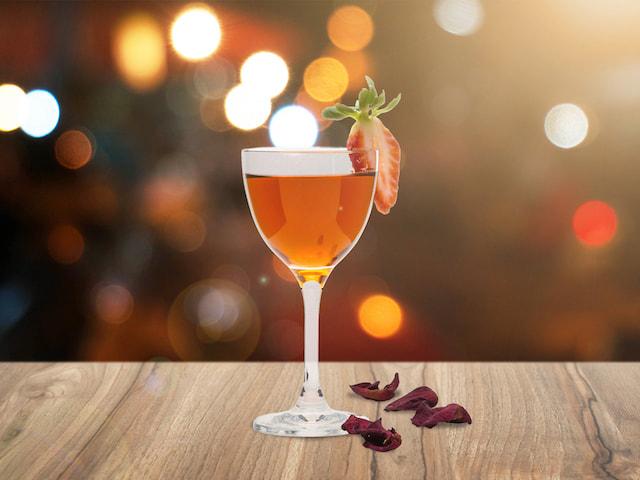
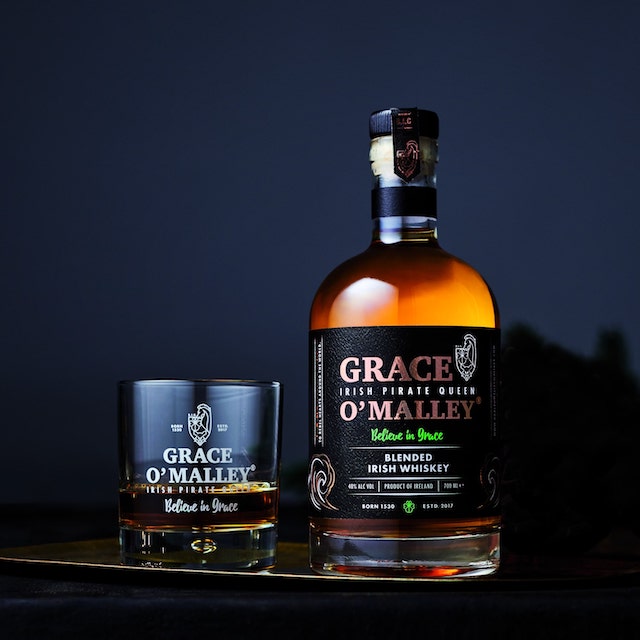
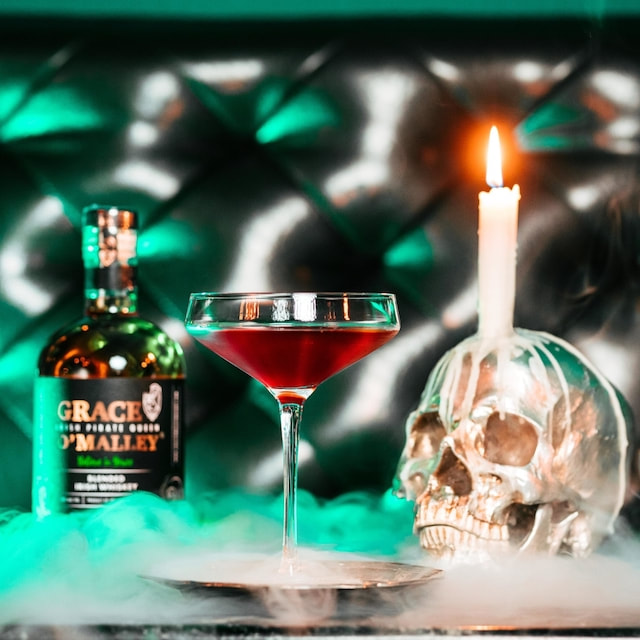
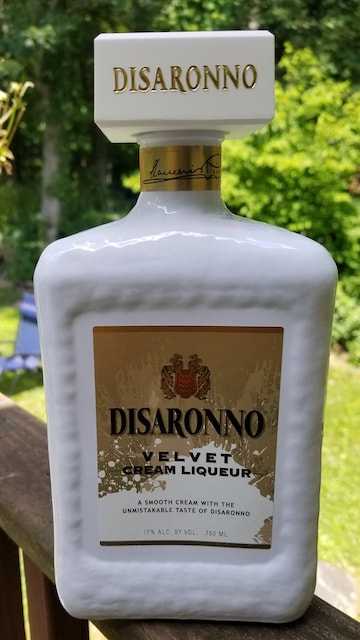
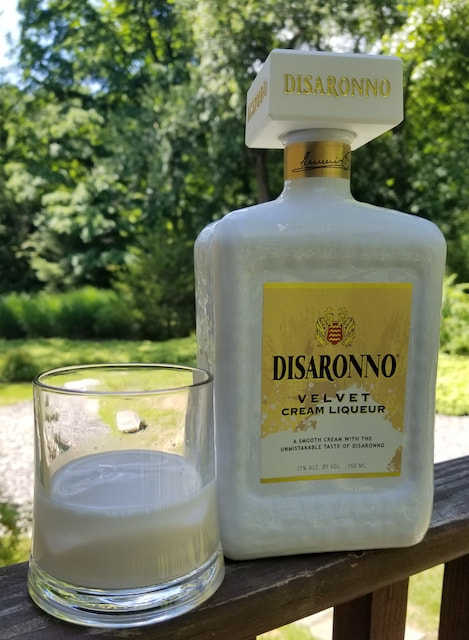
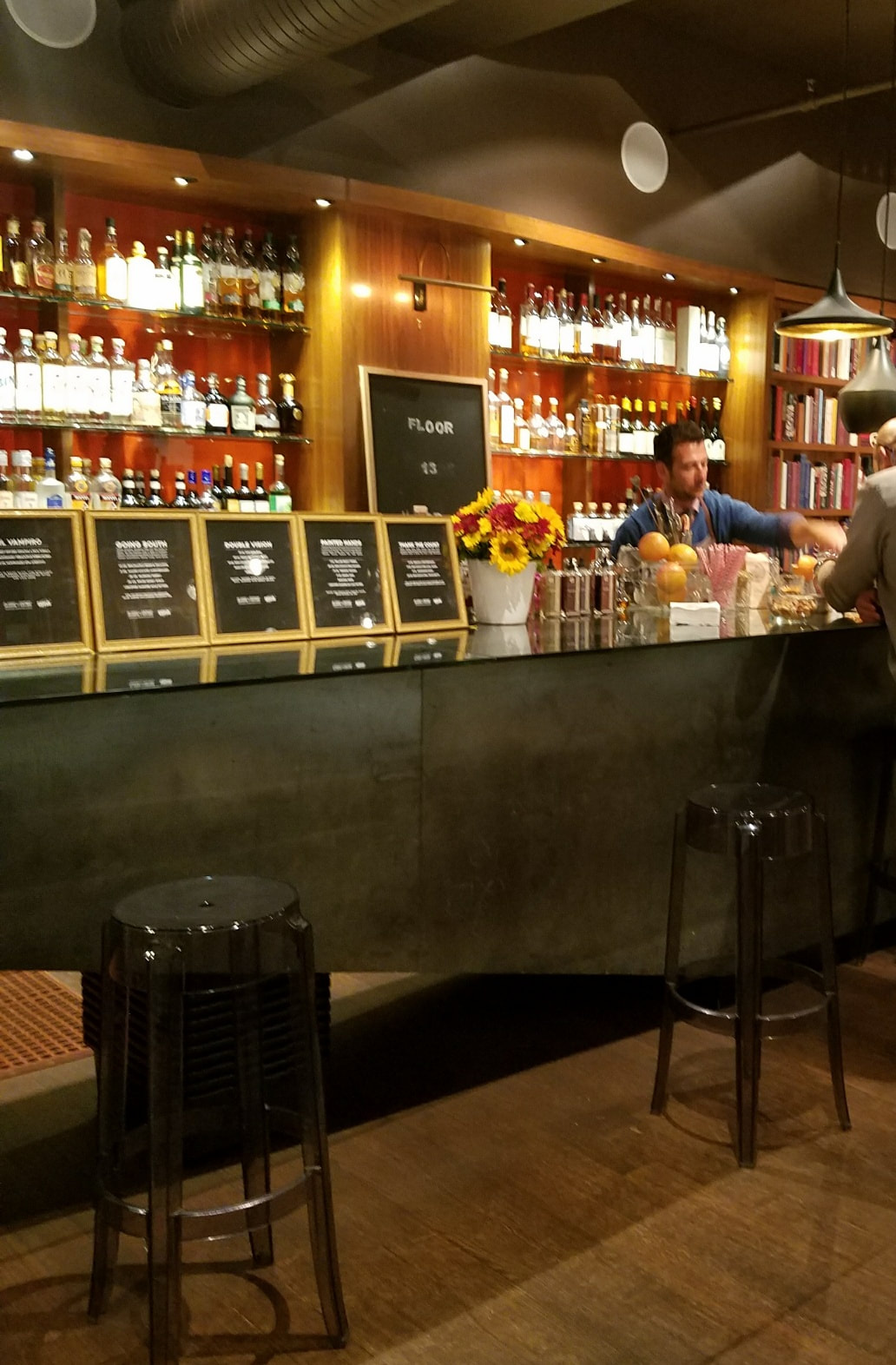
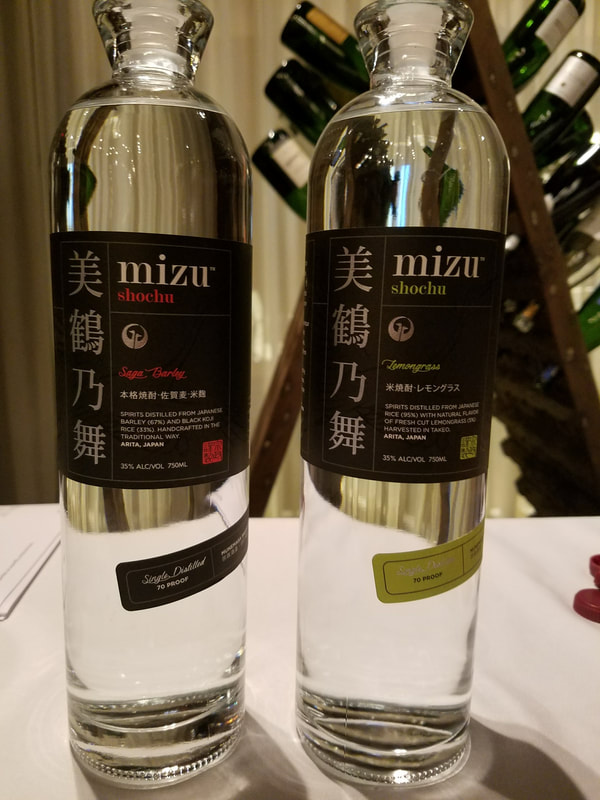
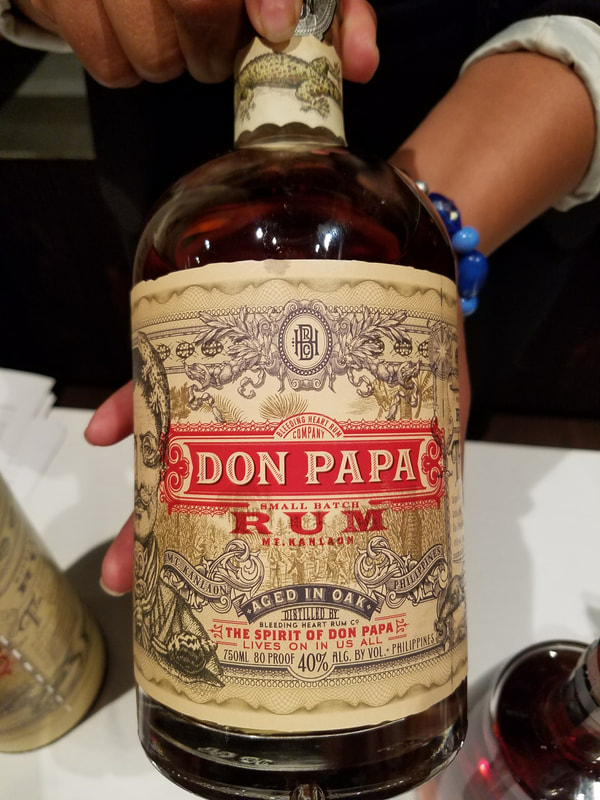
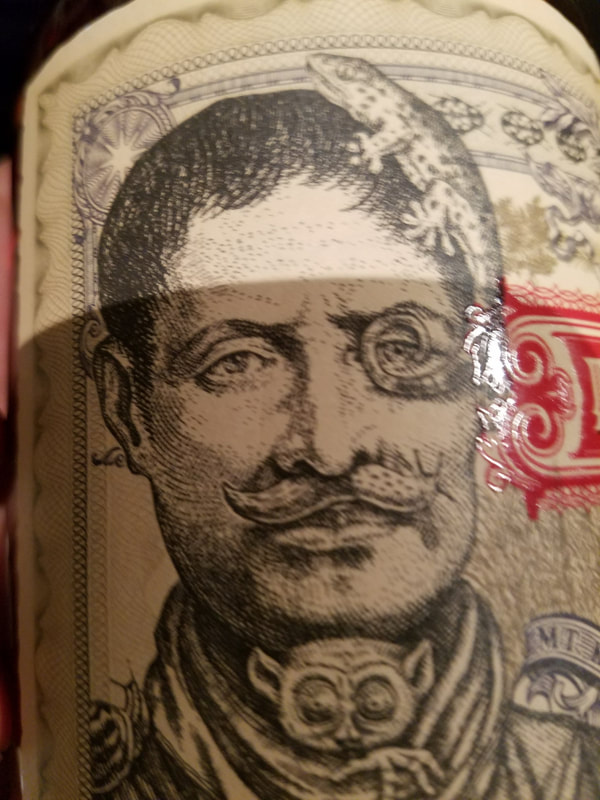


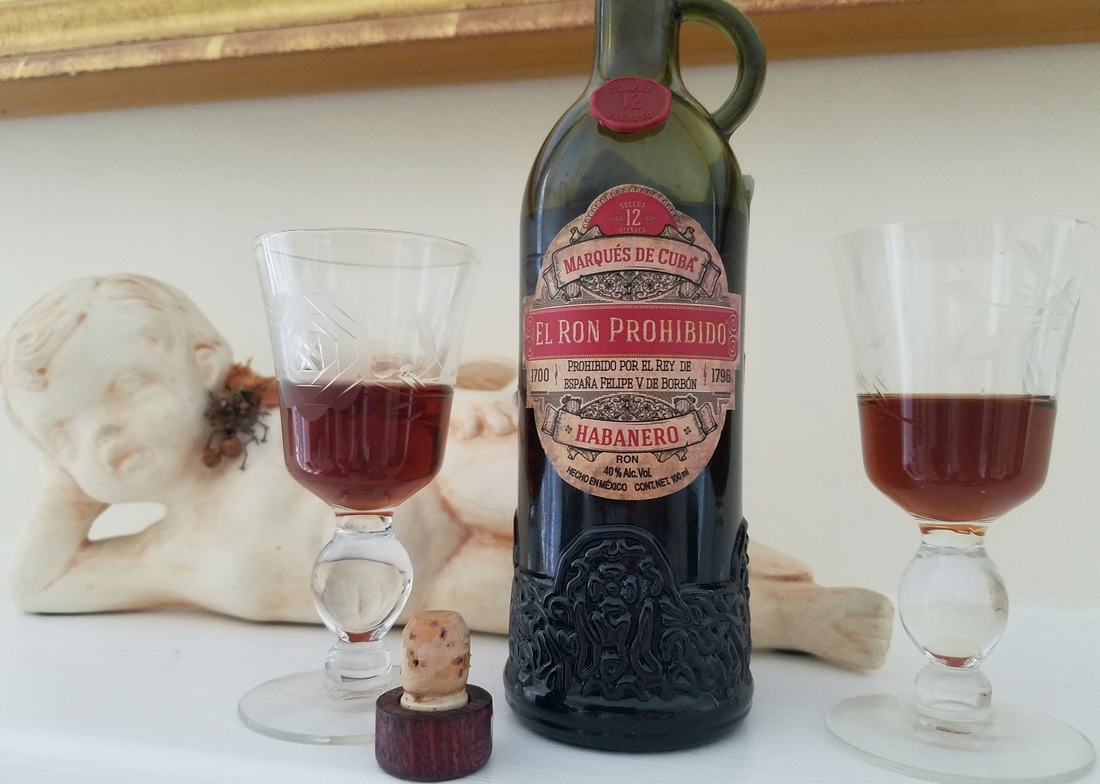
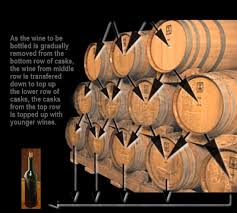
 RSS Feed
RSS Feed